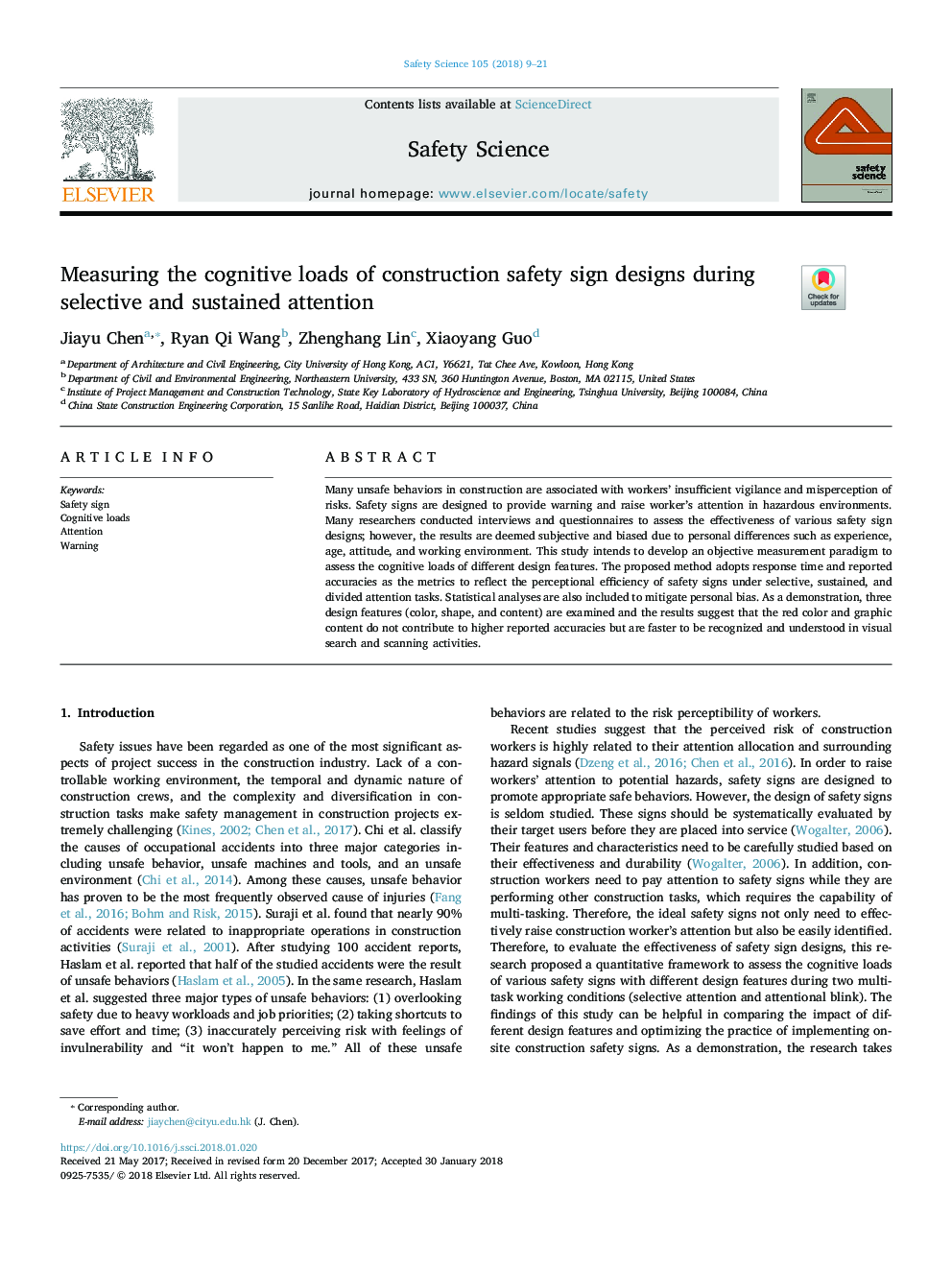| Article ID | Journal | Published Year | Pages | File Type |
|---|---|---|---|---|
| 6974949 | Safety Science | 2018 | 13 Pages |
Abstract
Many unsafe behaviors in construction are associated with workers' insufficient vigilance and misperception of risks. Safety signs are designed to provide warning and raise worker's attention in hazardous environments. Many researchers conducted interviews and questionnaires to assess the effectiveness of various safety sign designs; however, the results are deemed subjective and biased due to personal differences such as experience, age, attitude, and working environment. This study intends to develop an objective measurement paradigm to assess the cognitive loads of different design features. The proposed method adopts response time and reported accuracies as the metrics to reflect the perceptional efficiency of safety signs under selective, sustained, and divided attention tasks. Statistical analyses are also included to mitigate personal bias. As a demonstration, three design features (color, shape, and content) are examined and the results suggest that the red color and graphic content do not contribute to higher reported accuracies but are faster to be recognized and understood in visual search and scanning activities.
Keywords
Related Topics
Physical Sciences and Engineering
Chemical Engineering
Chemical Health and Safety
Authors
Jiayu Chen, Ryan Qi Wang, Zhenghang Lin, Xiaoyang Guo,
